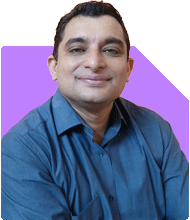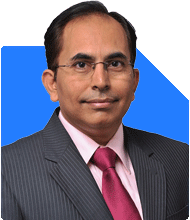Ramalingam Kalirajan |10902 Answers |Ask -Follow
Mutual Funds, Financial Planning Expert - Answered on Oct 24, 2024
He has an MBA in finance from the University of Madras and is a certified financial planner.
He is the director and chief financial planner at Holistic Investment, a Chennai-based firm that offers financial planning and wealth management advice.... more

Hi Ramalingam sir, I request you to kindly review my mutual fund investment : 1. Motilal Oswal Midcap Fund Rs 2500pm 2. Quant mid fund Rs 1500pm 3. ICICI prudential Bharat 22 fof Rs 1500pm 4. Nippon India large cap fund Rs 3000pm 5. JM flexi cap fund Rs 3000pm 6. Quant small cap fund Rs 3000pm 7. Tata nifty200 alpha30 index fund Rs 500pm All of them being direct plans Total amount invested Rs 15000pm
Let’s review your portfolio in detail:
Portfolio Overview
Motilal Oswal Midcap Fund – Rs 2,500 per month
Quant Mid Cap Fund – Rs 1,500 per month
ICICI Prudential Bharat 22 FOF – Rs 1,500 per month
Nippon India Large Cap Fund – Rs 3,000 per month
JM Flexi Cap Fund – Rs 3,000 per month
Quant Small Cap Fund – Rs 3,000 per month
Tata Nifty 200 Alpha 30 Index Fund – Rs 500 per month
These investments total Rs 15,000 per month, and it’s commendable that you have allocated funds across various categories, including large-cap, mid-cap, small-cap, and sector-specific funds. However, there are key areas to evaluate to help you optimize returns and manage risks.
Disadvantages of Direct Funds
Since you are investing in direct plans, it's important to be aware of a few limitations:
No Financial Guidance: Direct plans do not come with any personalized advice from a Certified Financial Planner. This could mean missing out on crucial insights and market trends that could boost your returns.
Lack of Market Knowledge: If you're not constantly tracking markets, you may miss out on strategic shifts. A professional fund distributor can guide you to take timely actions.
Overlooking Tax Efficiency: Direct plans do not provide any tax-efficient strategies. An expert's input can help minimize tax liabilities and maximize post-tax returns.
Given these limitations, I would recommend switching to regular funds through a Mutual Fund Distributor (MFD) with a Certified Financial Planner (CFP) credential. This will ensure professional guidance and better long-term returns.
Disadvantages of Index Funds
Your portfolio includes an index fund (Tata Nifty 200 Alpha 30 Index Fund). While index funds have low expense ratios, they come with their own set of challenges:
Lack of Flexibility: Index funds cannot adjust to changing market conditions. In a volatile market, this can result in lower returns compared to actively managed funds.
No Market Timing: An index fund simply follows the index, regardless of individual stock performance. Active funds, on the other hand, can exit underperforming stocks and reinvest in better opportunities.
For these reasons, I recommend focusing more on actively managed funds, where fund managers can provide better growth potential by actively selecting stocks and rebalancing portfolios based on market conditions.
Analysis of Your Current Mutual Funds
Now, let's analyze your specific fund choices and provide suggestions on how to refine your portfolio:
1. Motilal Oswal Midcap Fund – Rs 2,500 per month
Analysis: Midcap funds can offer higher returns than large-cap funds, but they also come with higher risk. Since you already have a significant allocation in midcaps, ensure that your risk appetite aligns with this investment.
2. Quant Mid Cap Fund – Rs 1,500 per month
Analysis: This is another midcap fund, and you are currently allocating Rs 4,000 in total toward midcaps (Motilal Oswal Midcap Fund and Quant Mid Cap Fund). While midcaps provide good growth potential, it’s essential to maintain a balanced portfolio by adding other asset classes.
3. ICICI Prudential Bharat 22 FOF – Rs 1,500 per month
Analysis: Bharat 22 FOF is a thematic fund that invests in public sector companies. While these funds can perform well during certain periods, they come with high concentration risk. If you are investing for long-term wealth creation, it might be wise to diversify your allocation rather than relying on sector-specific funds.
4. Nippon India Large Cap Fund – Rs 3,000 per month
Analysis: Large-cap funds provide stability and steady growth. Nippon India Large Cap Fund is a good choice for balancing your overall portfolio risk. Large-cap funds are essential for a well-rounded portfolio as they offer lower volatility than mid and small caps.
5. JM Flexi Cap Fund – Rs 3,000 per month
Analysis: Flexi-cap funds invest in large, mid, and small-cap companies, offering diversification. This fund could help reduce the risk in your portfolio, as it can invest across market capitalizations based on market conditions.
6. Quant Small Cap Fund – Rs 3,000 per month
Analysis: Small-cap funds can provide high returns, but they also come with the highest risk. While it's good to have some exposure to small caps, ensure you are not overly exposed to this segment.
7. Tata Nifty 200 Alpha 30 Index Fund – Rs 500 per month
Analysis: As discussed earlier, index funds have limitations, and I recommend shifting this amount to an actively managed fund for better growth potential and flexibility.
Areas of Improvement and Suggestions
Overlapping Funds: Your portfolio has an overlap in the midcap space (Motilal Oswal Midcap Fund and Quant Mid Cap Fund). While it's good to diversify, having too many funds from the same category can lead to duplication and reduce your overall returns. You could consolidate your midcap exposure into one well-performing fund.
Balanced Risk: You have allocated a significant portion of your portfolio to mid and small-cap funds, which are higher risk. To balance this, consider increasing your investment in large-cap or flexi-cap funds, which provide more stability and lower risk.
Reduce Sector-Specific Exposure: ICICI Prudential Bharat 22 FOF is a thematic fund with a high concentration in public sector companies. It might be a good idea to reduce your exposure to sector-specific funds and invest in diversified equity funds instead.
Increase Flexi Cap Allocation: Flexi-cap funds provide diversification across market capitalizations. By increasing your allocation to JM Flexi Cap Fund, you can better balance the risk and returns in your portfolio.
Reconsider Index Fund: Since index funds lack flexibility, I recommend shifting the Rs 500 currently allocated to Tata Nifty 200 Alpha 30 Index Fund to an actively managed large or flexi-cap fund. This will help you achieve better returns over the long term.
Tax Considerations
When selling equity mutual funds:
Long-Term Capital Gains (LTCG): Gains above Rs 1.25 lakh are taxed at 12.5%.
Short-Term Capital Gains (STCG): Gains made within three years are taxed at 20%.
Keep these tax rules in mind when planning to exit or rebalance your portfolio, as taxes can impact your overall returns.
Final Insights
Your mutual fund portfolio is a good start, but it requires some fine-tuning to optimize growth and manage risks better. Consolidating your midcap exposure, reducing sector-specific funds, and avoiding index funds can help you achieve more balanced growth. Shifting to regular funds through a Certified Financial Planner (CFP) can also provide expert guidance to further optimize your investments.
By following these adjustments and maintaining a disciplined investment approach, your portfolio can deliver strong returns over the long term.
Best Regards,
K. Ramalingam, MBA, CFP,
Chief Financial Planner,
www.holisticinvestment.in
https://www.youtube.com/@HolisticInvestment
You may like to see similar questions and answers below
Ulhas Joshi |280 Answers |Ask -Follow
Mutual Fund Expert - Answered on Jun 20, 2023
Ramalingam Kalirajan |10902 Answers |Ask -Follow
Mutual Funds, Financial Planning Expert - Answered on Apr 08, 2024
Ramalingam Kalirajan |10902 Answers |Ask -Follow
Mutual Funds, Financial Planning Expert - Answered on May 15, 2024
Ramalingam Kalirajan |10902 Answers |Ask -Follow
Mutual Funds, Financial Planning Expert - Answered on Nov 04, 2024
Ramalingam Kalirajan |10902 Answers |Ask -Follow
Mutual Funds, Financial Planning Expert - Answered on May 14, 2025
Anu Krishna |1749 Answers |Ask -Follow
Relationships Expert, Mind Coach - Answered on Dec 17, 2025
Anu Krishna |1749 Answers |Ask -Follow
Relationships Expert, Mind Coach - Answered on Dec 17, 2025
Radheshyam Zanwar |6748 Answers |Ask -Follow
MHT-CET, IIT-JEE, NEET-UG Expert - Answered on Dec 17, 2025
Anu Krishna |1749 Answers |Ask -Follow
Relationships Expert, Mind Coach - Answered on Dec 17, 2025
Dr Shakeeb Ahmed Khan |184 Answers |Ask -Follow
Physiotherapist - Answered on Dec 17, 2025
T S Khurana |538 Answers |Ask -Follow
Tax Expert - Answered on Dec 17, 2025
T S Khurana |538 Answers |Ask -Follow
Tax Expert - Answered on Dec 17, 2025
Janak Patel |72 Answers |Ask -Follow
MF, PF Expert - Answered on Dec 17, 2025
Ramalingam Kalirajan |10902 Answers |Ask -Follow
Mutual Funds, Financial Planning Expert - Answered on Dec 17, 2025
Samraat Jadhav |2511 Answers |Ask -Follow
Stock Market Expert - Answered on Dec 17, 2025




























